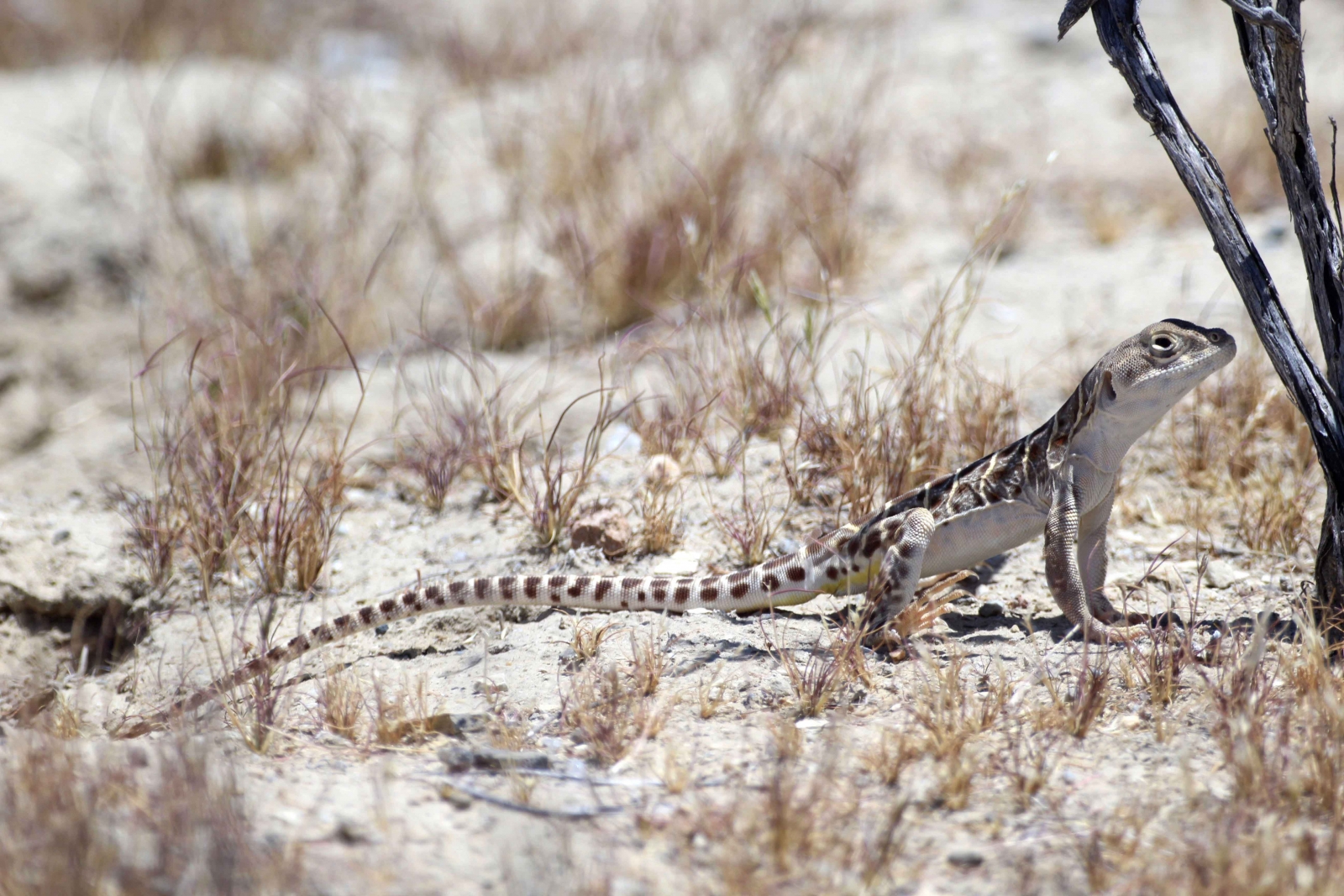The blunt-nosed leopard lizard was listed on the federal endangered species list in 1967.
The blunt-nosed leopard lizard (Gambelia sila) a large lizard endemic to California may be threatened by climate change, according to a study by California Polytechnic University San Luis Obispo, Canada’s York University, and the U.S. Bureau of Land Management.

Kat Ivey
The blunt-nosed leopard lizard was listed on the federal endangered species list in 1967.
The large lizard is spending more time in underground burrows than at the surface during the summers, where they can’t mate, eat or defend their territories, according to the study, led by Kat Ivey, a Cal Poly biological sciences graduate, and published in the journal Conservation Physiology.
Managed Cattle Grazing In N. California Helps Blunt-nosed Leopard Lizard
Leopard Lizard Care Tips and Information
The study says the lizard will lose more hours of daily activity due to higher temperatures this century and details how temperatures on the Carrizo Plain in San Luis Obispo and Kern counties has risen from the mid-70s in 1992, the first year temperature data was kept on the plain, to temperatures well into the 80s and with highs above 100 degrees in 2019.
The lizard, which has already lost 85 percent of its habitat to agriculture and oil exploration, and was listed as a federally endangered species in 1967, can be protected by better managing the lands in which the lizard is endemic. The federal government should better manage the kangaroo rat which digs the burrows in which the blunt-nosed leopard lizard also resides in, the study says. The researchers also say that small shrubs on the plain also benefit the blunt-nosed leopard lizard, enabling the reptiles to find shade during the hot hours of the day, which keeps them above ground for longer hours.
“Our study shows managing these burrows and the shrubs could be an important factor in the survival of the blunt-nosed leopard lizards,” Ivey told Cal Poly News.
The blunt-nosed leopard lizard can only be found in central California at elevations of 800 meters and lower. It eats invertebrates such as grasshoppers, beetles, bees, wasps, and ants, as well as other lizards. They are known to jump up to 60 centimeters to capture their prey and are between 86 and 119 mm in length, from snout to vent. The coloration of these reptiles range from yellowish and light gray brown to dark brown with a white underbelly. Dark spots run across the back. The species is listed on the federal and state endangered species list.
The complete study, “Thermal ecology of the federally endangered blunt-nosed leopard lizard (Gambelia sila),” can be read on the Conservation Physiology website.


